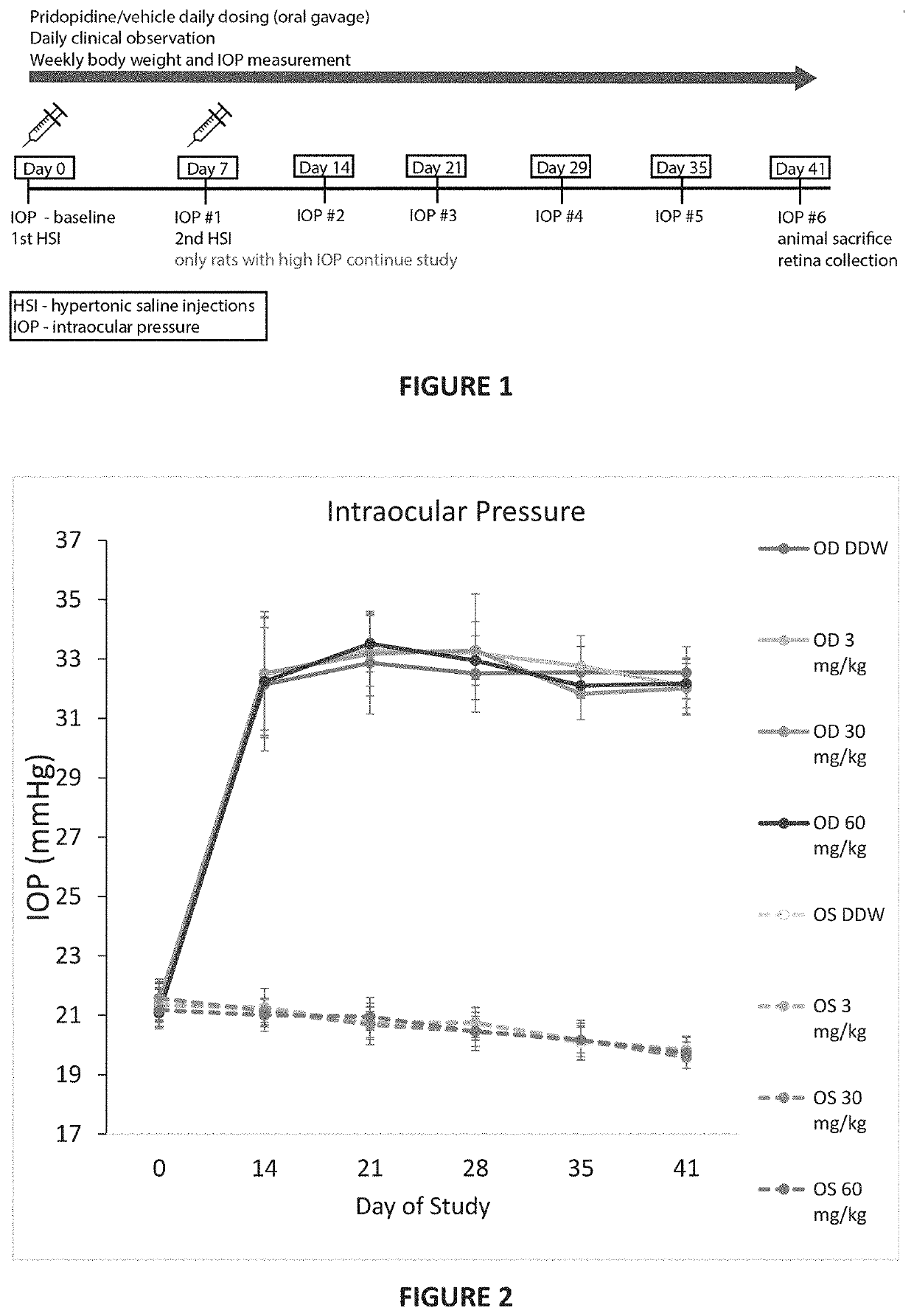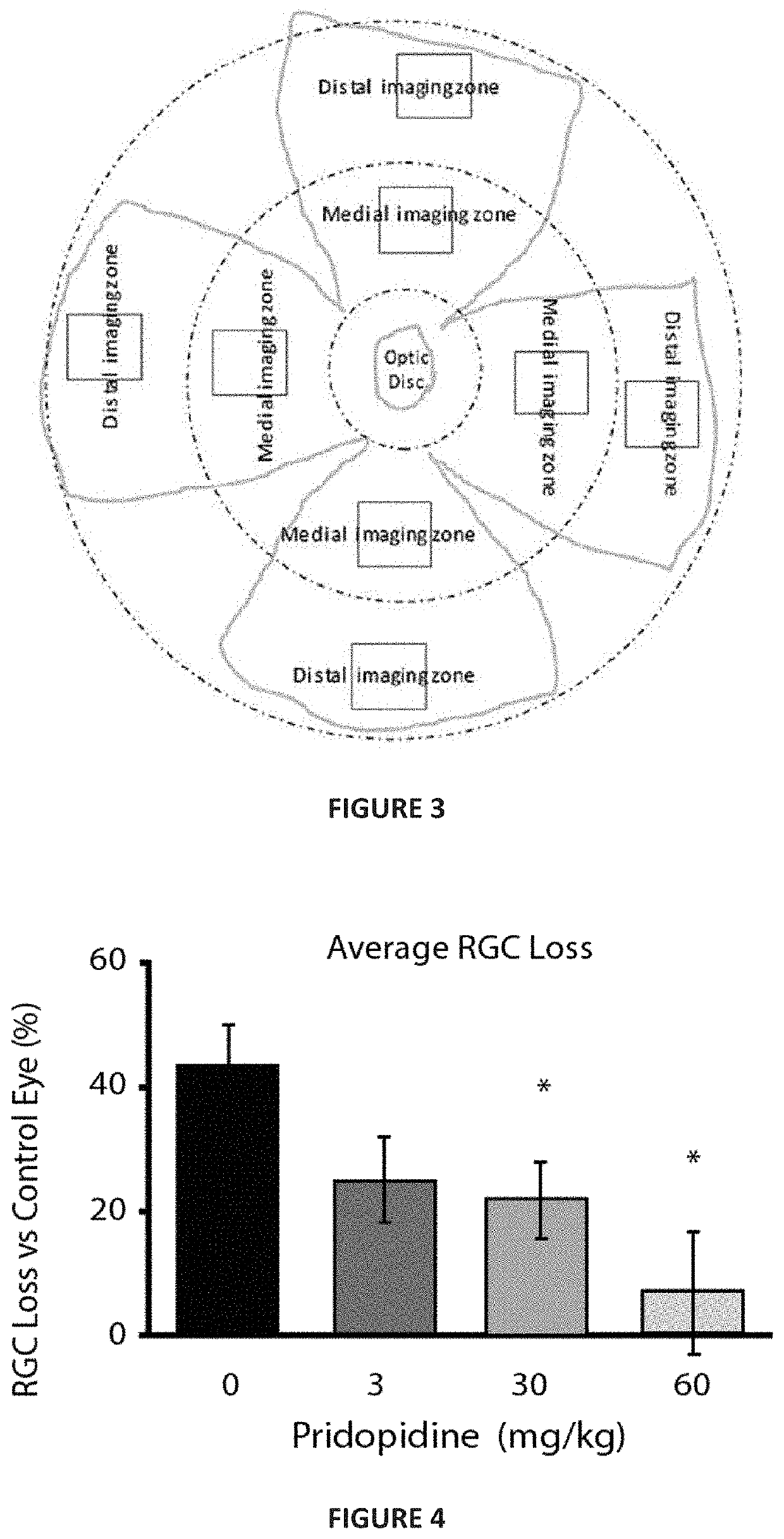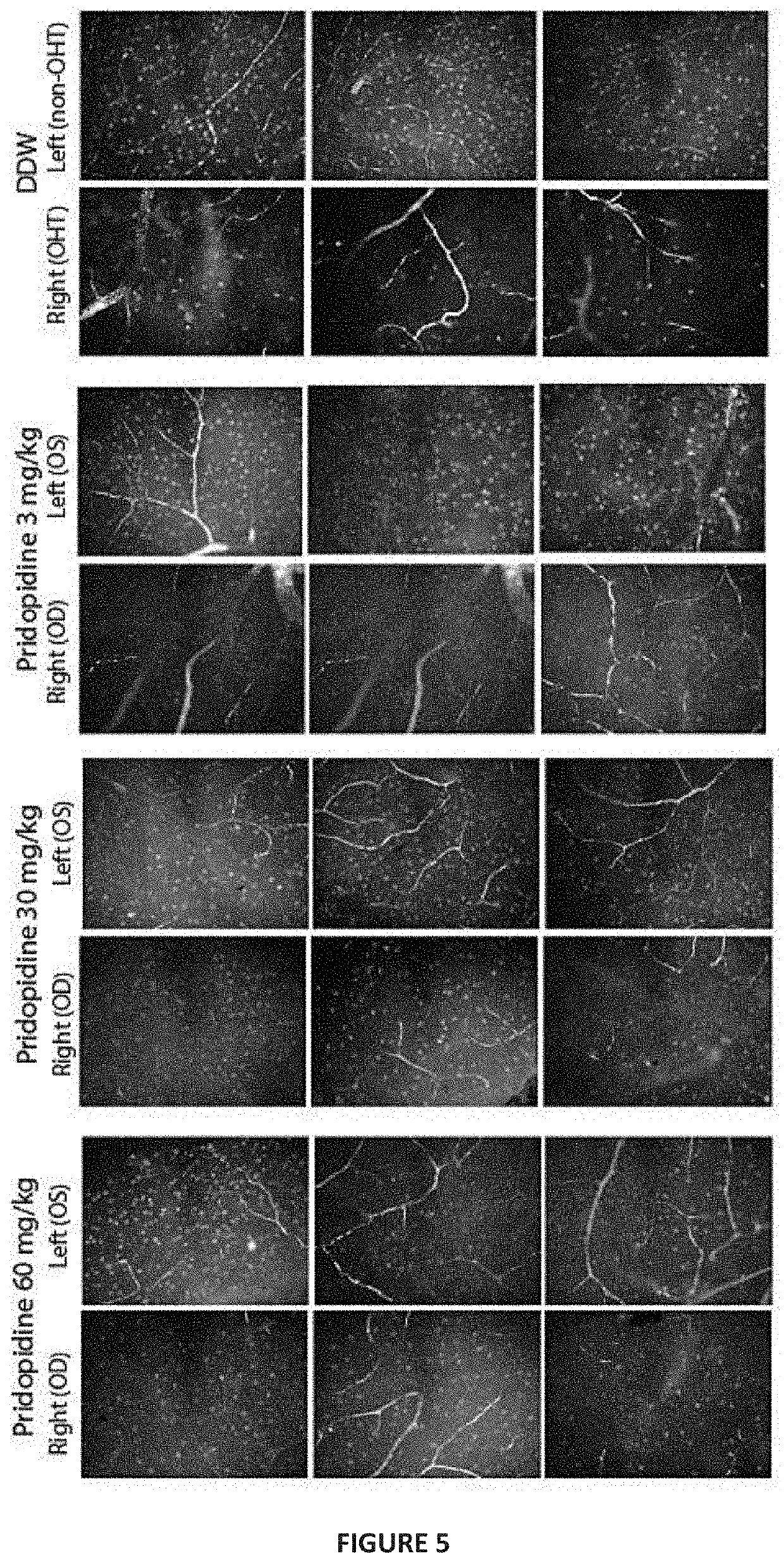Treatment of neurodegenerative eye disease using pridopidine
a neurodegenerative eye disease and pridopidine technology, applied in the direction of sense disorder, organic active ingredients, pharmaceutical delivery mechanisms, etc., can solve the problems of many patients who will continue to lose their vision, reduce or prevent optic nerve axon loss or damage, reduce or prevent a retinal ganglion cell loss or death, and reduce or prevent optic nerve axon loss
- Summary
- Abstract
- Description
- Claims
- Application Information
AI Technical Summary
Benefits of technology
Problems solved by technology
Method used
Image
Examples
example 1
ne Protects Retinal Ganglion Cells in the Rat Morrison Model of Glaucoma
[0173]In order to test the efficacy of pridopidine for treating RGC degeneration and ultimate death, the well-established Morrison model for glaucoma was utilized. In this model, sclerosis of the aqueous veins via retrograde introduction of hypertonic saline increases intraocular pressure (IOP). Hypertonic saline injection (HSI) was performed on day 0 and day 7 into the episcleral veins of the right eye of pigmented Brown Norway. Rats were sedated with ketamine and xylazine (40-80 and 5-10 mg / kg, respectively), kept warm and eyes moist to avoid desiccation during the procedure. Eye surface was treated with erythromycin (0.5%). On Days 0 and 7, hypertonic saline solution (250 μL, NaCl, 1.8-2.0M) was injected into the limbal vascular plexus via different episcleral veins in the OHT eye. For IOP measurement, corneas were anaesthetized with 0.5% proparacaine HCl ophthalmic solution and then IOP measured using a Tono...
example 2
ne Binds Strongly to Melanin
[0177]To evaluate pridopidine binding to melanin, the retention of 14C-pridopidine in different tissues in the rat was evaluated. A single 3 mg free base / 1 mL / kg dose of 14C-pridopidine was administered to male Long Evans brown rats and radioactivity assessed over time in pigmented and non-pigmented tissues. The rats were fasted from 16 hours before to 4 hours after administration. Animals were sacrificed by exsanguination from the abdominal vena cava under ether anesthesia.
[0178]At 24 hours post-administration, a whole-body autoradiogram was prepared. Hair was clipped, the nasal cavity and anus filled with 4% carboxymethyl cellulose sodium (CMC-Na), and the carcass frozen in a dry ice-acetone mixture. After removal of extremities, carcass was embedded in 4% CMC-Na, frozen again in dry ice-acetone, sectioned in a cryomicrotome (30 μm) and collected onto adhesive tape. Sections were lyophilized for 3 days, then covered with a protective membrane and placed...
example 3
ne Protects Retinal Ganglion Axons in Albino Wistar Rats
[0184]To test whether pridopidine binding to melanin affects its neuroprotective activity, the effect of pridopidine on retinal ganglion cell and axon loss was evaluated in glaucomatous Wistar rats, which are albino and do not synthesize melanin.
[0185]In Wistar rats, the laser coagulation (LC) model of experimental glaucoma was utilized.
[0186]Unilateral induction of IOP elevation was performed twice, at day 0 and day 7. IOP increase was induced by 532 nm diode laser (Oculight® TX; Iridex) photocoagulation of episcleral veins, as previously described. IOP was measured with a TonoLab tonometer. All lasered eyes had IOP of 18 mmHg or higher as assessed on day 1 (FIG. 9).
[0187]Pridopidine at doses of 3, 30 and 60 mg / kg or vehicle control was administered by oral gavage daily, starting from day 1, after confirming IOP elevation. IOP was measured at baseline, and after laser photocoagulation on days 1, 4, 7, 8, and 14 (FIG. 10).
[0188...
PUM
| Property | Measurement | Unit |
|---|---|---|
| Fraction | aaaaa | aaaaa |
| Fraction | aaaaa | aaaaa |
| Fraction | aaaaa | aaaaa |
Abstract
Description
Claims
Application Information
 Login to View More
Login to View More - R&D
- Intellectual Property
- Life Sciences
- Materials
- Tech Scout
- Unparalleled Data Quality
- Higher Quality Content
- 60% Fewer Hallucinations
Browse by: Latest US Patents, China's latest patents, Technical Efficacy Thesaurus, Application Domain, Technology Topic, Popular Technical Reports.
© 2025 PatSnap. All rights reserved.Legal|Privacy policy|Modern Slavery Act Transparency Statement|Sitemap|About US| Contact US: help@patsnap.com



